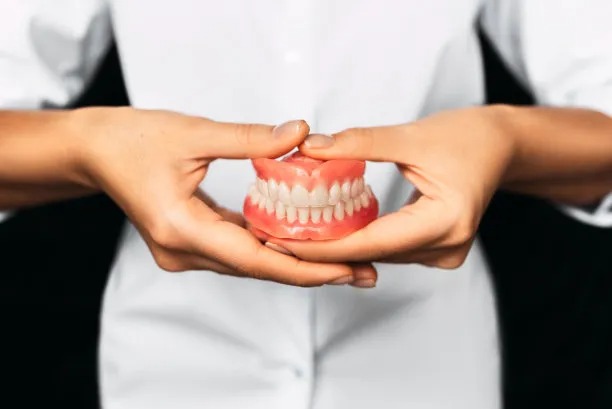The Complete Guide to Extracting a Tooth Safely and Comfortably for Patients and Dentists
Summary: Extracting a tooth is a common dental procedure, but it requires careful planning and execution to ensure both patient comfort and dentist efficiency. This guide serves as an essential resource for dental professionals and patients alike, detailing the critical steps involved in tooth extraction. By addressing patient communication, preparing the right tools, implementing proper techniques, and ensuring a smooth recovery process, this comprehensive guide aims to enhance the overall tooth extraction experience. Incorporating these elements guarantees a successful procedure that alleviates fears and optimizes health outcomes, making it a valuable reference for anyone facing tooth extraction.
1. Importance of Patient Communication

Effective communication between the dentist and the patient is vital before any extraction procedure. Patients often experience anxiety related to dental treatments, especially tooth extractions. Therefore, it is essential for the dentist to provide clear information regarding the procedure, potential discomfort, and aftercare to alleviate these fears. Engaging in a detailed discussion fosters trust and encourages patients to voice any concerns they may have.
Moreover, dental professionals should explain the reasons behind the extraction. Understanding the necessity can help patients accept the procedure more comfortably. Offering insights into how the extraction might benefit their overall dental health can also facilitate cooperation from the patient. Completing a thorough medical history assessment will enable the dentist to personalize the approach to the extraction, prioritizing the patients specific needs and health considerations.
Finally, after establishing a dialog, utilize visual aids or models to further explain the extraction process. This visual support can clarify patient doubts and make the upcoming experience less intimidating. By nurturing patient relationships, dentists can significantly enhance the extraction processs effectiveness and comfort level.
2. Preparing the Necessary Tools and Environment
A well-prepared environment is crucial for the success of a tooth extraction. Dental professionals should ensure that all necessary tools are readily available and properly sterilized to prevent infection. Essential instruments include dental elevators, forceps, and suction devices, which must be organized and accessible during the procedure.
Additionally, creating a calm and inviting atmosphere can soothe anxious patients. From comfortable seating to gentle lighting, every detail can help reduce pre-extraction stress. Play soft music and consider aromatherapy options to make the environment more comforting. These small adjustments can significantly enhance the patient’s overall experience.
Dentists should also have an emergency kit on hand, prepared for any unexpected situations. This includes medications for pain management and antibiotics for infection prevention. Being equipped for emergencies not only helps manage potential complications but also reassures the patient that they are in capable hands. Adequate preparation is key to a smooth tooth extraction procedure.
3. Implementing Safe Extraction Techniques
The actual extraction procedure should be executed with precision and care. Dentists must assess the tooth’s position and decide whether a simple extraction or surgical extraction is necessary. Proper anesthesia is critical; ensuring that the patient is adequately numbed reduces pain and anxiety significantly during the procedure.
During the extraction, using the right technique is essential to minimize trauma to the surrounding tissues. Gentle movements and the use of specific tools allow for a less invasive process, which leads to quicker healing and less discomfort post-surgery. Dentists should also take care to avoid fracturing the tooth during extraction, as this can complicate the procedure and necessitate further interventions.
After the extraction, it’s important to provide immediate post-operative care instructions. Informing patients about what to expect regarding swelling, bleeding, and pain allows them to prepare for their recovery effectively. This guidance helps patients feel supported and less anxious about the healing process, ultimately contributing to a smoother recovery.
4. Ensuring a Smooth Recovery Process
Post-extraction care is critical for ensuring a smooth recovery for patients. Dentists should provide clear written instructions on how to manage pain and swelling, including the recommended use of ice packs and over-the-counter medication. Offering dietary advice is also beneficial; patients should be encouraged to stick to soft foods and avoid straws, which can dislodge clots and complicate healing.
Moreover, follow-up appointments are essential to monitor healing and address any complications that may arise. Patients should be informed about the signs of infection or complications, encouraging them to seek help if needed. This proactive approach can significantly enhance recovery outcomes and patient satisfaction.
Additionally, educating patients on maintaining good oral hygiene while recovering helps prevent future dental issues. Reminders about gentle brushing techniques and the importance of avoiding irritating substances contribute to a comprehensive recovery plan. A well-informed patient can play an active role in their healing process, leading to better long-term results.
Summary:
This comprehensive guide on tooth extraction emphasizes the importance of a holistic approach that includes effective communication, careful preparation, precise techniques, and thorough aftercare. By focusing on these elements, dental professionals can ensure that extraction procedures are performed safely and comfortably for patients. This dual focus enhances both patient satisfaction and procedural efficiency.
This article is compiled by Vickong Dental and the content is for reference only.



